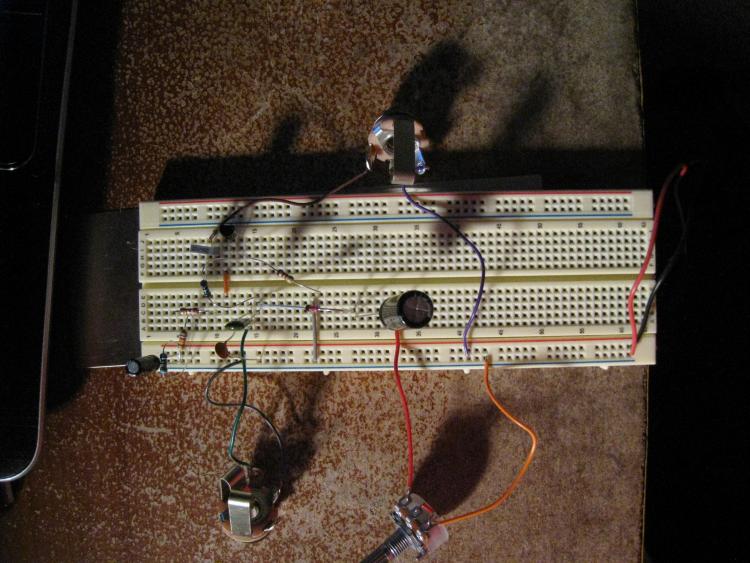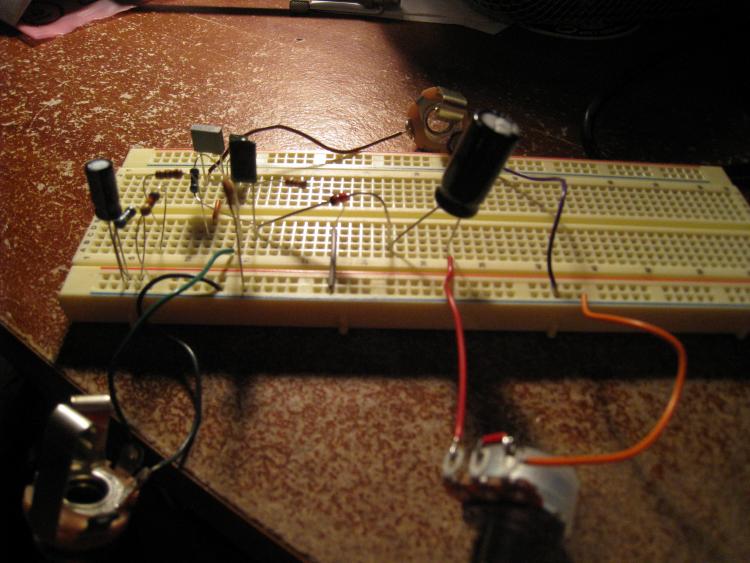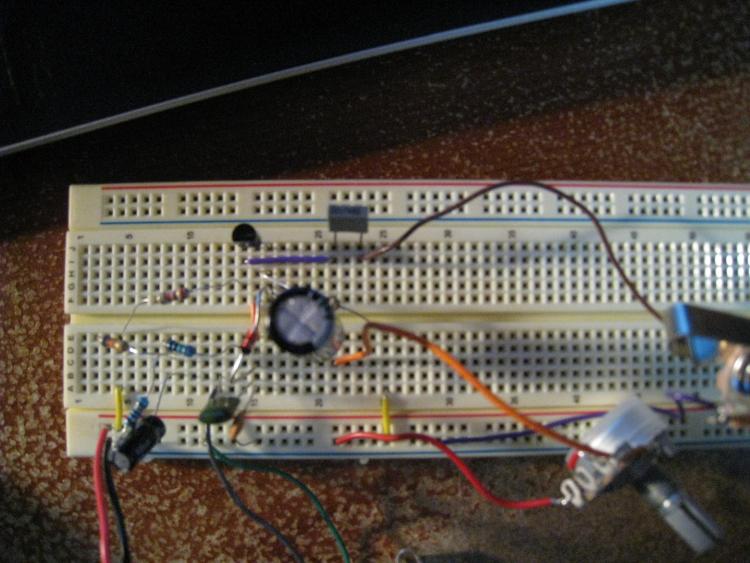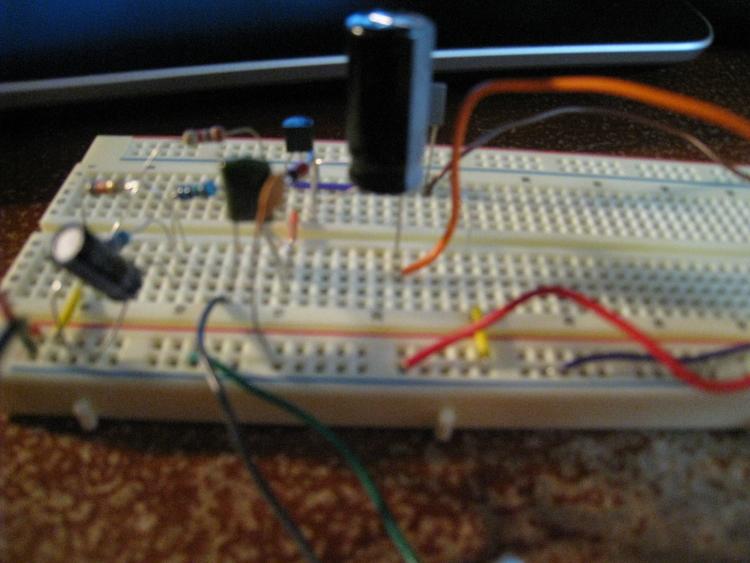Breadboarding Help
|
Hey guys I need some help trying to figure out what I may have done wrong. I tried breadboarding the Catalinbread Super Chili Picoso and I cant control the volume, basically the pot isn't working at all. I checked the components and it seems that the signal is passing through all the components, but once it gets to the 470uF cap to the pot to ground something is going wrong. I also tried plugging directly into the amp without the pedal, and its hard to tell if its doing anything.
This is the first breadboard circuit I've done without any directions, so any guidance would be awesome. I used the schematic for the AMZ Mosfet Booster here. Thanks in advance. BTW, I wired it up without a switch, so its automatically on.  |
|
Here's anything picture. I can try to take better if it helps.

|
|
looks to me like your output isnt connected to the pot, circuit output goes to pot lug 3. lug 1 goes to ground and lug 2 connects to tip of the output jack.
If it wasn't for this website I would definitely have a life.
|
|
Dexxyy: The gain control in this circuit isn't the usual output volume control voltage divider, it's a variable resistor that sets the voltage gain by controlling the source resistance.
John: I can't make out all the connections in your pictures, but it appears that the junction of the diode anode and the big cap is not connected to the mosfet source as it should be. This would explain why the gain knob doesn't work - it's essentially decoupled from the circuit. The diode cathode also doesn't appear to be connected to the gate as it should be. You also appear to have reversed the mosfet (the output cap looks like it's attached to the source, and the source resistor looks like its attached to the drain), unless you've substituted the BS170 with a 2N7000 or something else. It's possible that there other problems, too, but I would need better pictures to be sure. |
|
Another thing: it looks like your 10uF cap and 100k resistor to ground are attached directly to V+, when they should be attached to Vr.
|
|
GOOD NEWS EVERYONE..... I got it working. Thanks again Induction, you seem to always come to the rescue and give me the guidance I'm looking for. I took the whole thing apart looked at the schematic again and what you said and redid it. I think the best thing for me to do is to start at the input and work my way across to complete that one path, cause the first time I did it I started at multiple points and it was a mess. There seems to be a lot more grit to this when its turned up then I thought, so going to try to figure out how to clean it up a little, maybe replace the bs170's with 2N7000. The other thing is it's very noisey when not in use, except with my active bass (has a switch for active/passive, noise in passive, quiet in active). Is it normal for there to be more noise in a breadboard because you don't have the grounding of the enclosure, or did I do something else wrong.
Here's the new setup.  
|
|
Great! Glad you got it working.
Grit at high volume: It's possible that this is coming from your amp. (At high enough input levels, your preamp will distort). You can check it by temporarily adding a 100k volume pot at the output: lug 3 to previous output, lug 1 to ground, lug 2 is your new output. Crank the gain and turn down the output volume. If it still distorts, it's the circuit. If it doesn't, it's the amp. Noise: this can come from a few sources, including, as you said, lack of shielding from not being in a grounded enclosure, and power supply noise. Is it noisy with a battery? If not, then you'll probably need to use either a battery or a regulated adapter for power. Unregulated adapters have some ripple in the voltage. In this circuit, that ripple can travel through the 62k and 10M resistors to the mosfet gate, where it gets amplified along with the signal. The 10uF cap helps filter out the hum, but sometimes some of it gets through. Of course with any booster the normal hum from single coil pickups, fluorescent lights, video monitors, etc., gets amplified along with the signal. Not much you can do about that except find a faraday cage to play in. |
«
Return to Open Chat
|
1 view|%1 views
| Free forum by Nabble | Edit this page |

